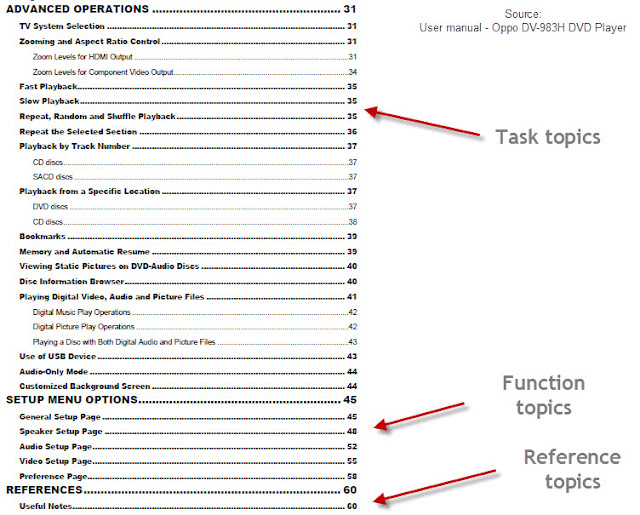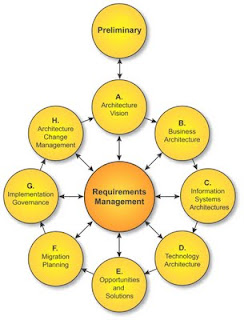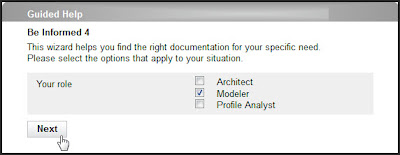Making information accessible
One
of the main challenges when creating user documentation, is the
accessibility of the information. In traditional documentation a
hierarchical structure - represented in a table of contents - was the
only way of structuring the information. Task topics, concept topics and
reference topics had to be mixed up in one overall structure.
A good example of this mix of topic types is visible in the following example, taken from the manual for the OPPO DV-983 DVD Player:
What you see is a list of possible tasks, which gives the impression of task-based instructions. This is followed by a list of concept topics, that seem to refer to several setup and preference screens. The manual is concluded with reference topics. So we have what seems to be a hierarchical structure with three entry points: task, screen and reference. Is this how our users think? Is this a logical way to structure information?
A closer look at the task topics reveals that these are in isolated work instructions for specific functions. There is no overall human task, nor are they always described in a way that all users would immediately understand. If I would like to know something about skipping parts of a DVD, can I find that information under "Fast Playback"?
Let's look at another example of a manual for a DVD player, this time taken from the manual for the Pioneer DV-05 Elite DVD Player:
It is interesting to see how we can get two completely different information structures for basically the same product. Although the main themes suggest a diversion between task and concept based information, a closer look reveals a complete mix of these topic types: 'About the main menu" a typical function based topic has the same parent as "Changing settings", a more or less task based topic.
A quick look at an on-line manual for a Car DVD Player reveals that not much has changed:
We can still see the same mixture of function and task based information, in a pure hierarchical structure. Nothing has changed and this is logical because most documentation is still developed from a hierarchical perspective. With the growing emphasis on single sourcing and maximization of the re-use of information, breaking with this approach seems even more difficult because functional topics provide us with excellent chunks of information for topic based writing. This in contrast with the more scenario-like task based topics.
 The
STC Summit 2013 is probably the world's largest and most influential
conference for everyone working in the area of technical communication.
The Summit is packed with more than 80 sessions over the three full
workdays with topics covering all aspects of technical writing, editing,
project management, and publication production. It takes place 5-8 May
in Atlanta, Georgia.
The
STC Summit 2013 is probably the world's largest and most influential
conference for everyone working in the area of technical communication.
The Summit is packed with more than 80 sessions over the three full
workdays with topics covering all aspects of technical writing, editing,
project management, and publication production. It takes place 5-8 May
in Atlanta, Georgia.
A preliminary overview of the sessions can be found on:
http://summit.stc.org/program-info/program-overview/
A good example of this mix of topic types is visible in the following example, taken from the manual for the OPPO DV-983 DVD Player:
What you see is a list of possible tasks, which gives the impression of task-based instructions. This is followed by a list of concept topics, that seem to refer to several setup and preference screens. The manual is concluded with reference topics. So we have what seems to be a hierarchical structure with three entry points: task, screen and reference. Is this how our users think? Is this a logical way to structure information?
A closer look at the task topics reveals that these are in isolated work instructions for specific functions. There is no overall human task, nor are they always described in a way that all users would immediately understand. If I would like to know something about skipping parts of a DVD, can I find that information under "Fast Playback"?
Let's look at another example of a manual for a DVD player, this time taken from the manual for the Pioneer DV-05 Elite DVD Player:
It is interesting to see how we can get two completely different information structures for basically the same product. Although the main themes suggest a diversion between task and concept based information, a closer look reveals a complete mix of these topic types: 'About the main menu" a typical function based topic has the same parent as "Changing settings", a more or less task based topic.
On-line documentation
With on-line documentation this forced hierarchical structure is no longer necessary. Information developers have the possibility to structure their content in a variety of ways, combining for instance hierarchical function topics and serial task based structures in one cross-linked web of content. Users can now browse through categories, search through the content or sometimes even use the possibilities of faceted search and navigation to quickly find the information they need. But does this help them, are they really better of with these new forms of documentation?A quick look at an on-line manual for a Car DVD Player reveals that not much has changed:
We can still see the same mixture of function and task based information, in a pure hierarchical structure. Nothing has changed and this is logical because most documentation is still developed from a hierarchical perspective. With the growing emphasis on single sourcing and maximization of the re-use of information, breaking with this approach seems even more difficult because functional topics provide us with excellent chunks of information for topic based writing. This in contrast with the more scenario-like task based topics.
Thinking in goals and activities
It doesn't take a new technology to revolutionary improve the accessibility of our documentation, instead we should take one step back and critically look at our documentation process. Remember what we have learned about technical writing and the importance to analyze your audience? Well our audience doesn't think in functions and not even in tasks, it wants to complete a goal. And to achieve that goal it needs to perform activities, make decisions, choose from options and learn about something about the functionality of the product:- Investigate the (possible) goals of the user, given its context
- Pick one goal and define what activities should be performed with the product to achieve that goal.
- Define what possible options, decisions and calculations are part of this process
- Make a model or structure that represents this process
- Add mini hierarchical substructures to detail some specific functions (or screens)
- Start writing
- Pretest & go back to 2
This more process-driven approach to documentation is the central theme in my presentation at the STC Summit 2013 in Atlanta. During this session I will demonstrate how we can embed instructions in a process and make them actionable by using semantic technology. But you don't have to wait until May to learn how we can provide users with the right information at the right time. Follow my blog and we will make this journey from hierarchical structures to process and knowledge-driven semantic solutions together. During this journey I will work together with my colleague Mills Davis, an acclaimed specialist in next wave semantic technologies.
Want to follow our preparations for Atlanta? Check out the Be Informed blog:
http://blog.beinformed.com/
Want to follow our preparations for Atlanta? Check out the Be Informed blog:
http://blog.beinformed.com/
STC Summit 2013
 The
STC Summit 2013 is probably the world's largest and most influential
conference for everyone working in the area of technical communication.
The Summit is packed with more than 80 sessions over the three full
workdays with topics covering all aspects of technical writing, editing,
project management, and publication production. It takes place 5-8 May
in Atlanta, Georgia.
The
STC Summit 2013 is probably the world's largest and most influential
conference for everyone working in the area of technical communication.
The Summit is packed with more than 80 sessions over the three full
workdays with topics covering all aspects of technical writing, editing,
project management, and publication production. It takes place 5-8 May
in Atlanta, Georgia. A preliminary overview of the sessions can be found on:
http://summit.stc.org/program-info/program-overview/
Follow me on Twitter
Make sure to follow @beinformedcom, @cvanmansom and @millsdavis.
#effectiveinformation
Tweets related to making information accessible by using semantic technologies
#stc13
All information related to the STC Summit 2013






Comments